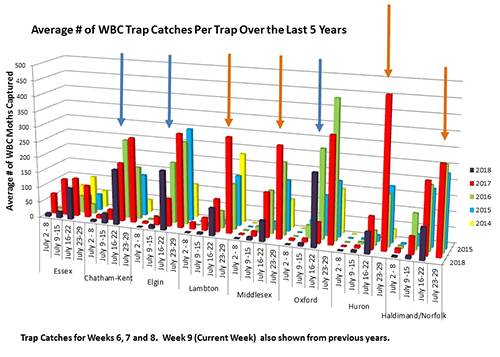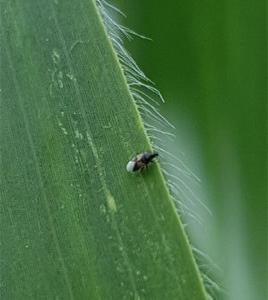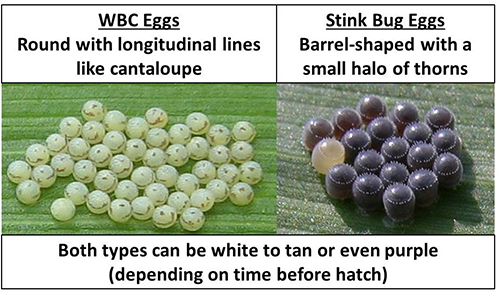
Figure 2. Weekly Trap Catches for Counties in SW ON. These counties are always the first to experience peak flight. Blue arrows indicate those counties that saw the biggest catches last week. Orange arrows also indicate those that should also peak this week.
So what does this all mean? Later planted fields that are still in pre-tassel to full tassel stage should be the focus for scouting over the next two weeks. Many experienced scouts, including myself, have yet to find egg masses in their fields. Some fields have reached threshold but they are not as common as in previous years. Spraying, just in case, does not make sense this year. Even if your trap catches were to jump significantly in the next two weeks, don’t assume that WBC is laying eggs in your field. WBC is really only attracted to pre-tassel to full tassel corn so any fields that are already in fresh silk stage have likely avoided most of the egg laying. And there are so many more natural enemies in the fields this year that are ready and waiting for WBC to show up on their plant. Spraying, just in case, is detrimental to them.


figure 3.Ladybugs are abundant this year in corn and dry beans, figure 4 .Minute pirate bugs are predators to eggs and small larvae. T. Baute, OMAFRA
Dry bean growers should still follow the recommendations provided here. But I encourage you to consider leaving check strips since this year, a spray might not pay off if moth flights remain low in general. Especially fields east and north of Oxford.
Make sure you are not confusing stink bug eggs for western bean cutworm eggs. WBC eggs are round while stink bug eggs are barrel (or marshmallow, if you prefer) shaped.

Source : fieldcropnews